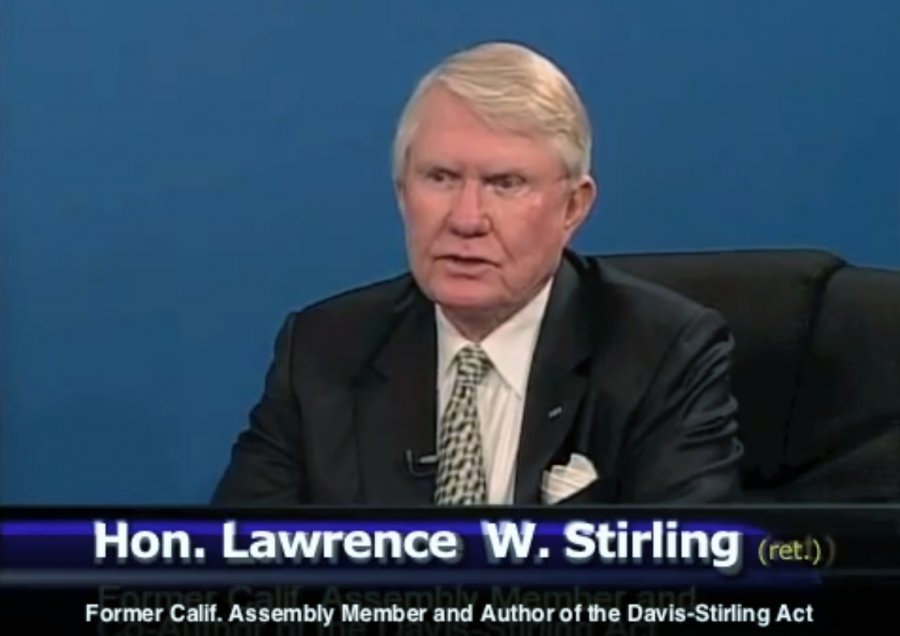I am glad that they closed the San Onofre Generating Station.
I don’t say that because I have gone over to the dark side and joined the environmental nihilists who think people are blight on the Earth.
Nor am I a born-again acolyte of Traitor Jane and her fellow faux Green Party folks pretending to be anti-nuclear moralists when they are actually anti-American activists seeking to cripple our economy and diminish our position in the world.
In Europe, Green-party members are called Watermelons as they are only “green” on the outside but “red” inside.
Nope, my view on San Onofre is guided by both personal and scientific concerns.
First the personal.
The man I admired most in the world was my father, Jack Stirling, who passed away several years ago.
He was a career industrial electrician.
He apprenticed on the big stuff in the steel mills of Indiana Harbor and would likely have stayed, if the naval war in the South Pacific had not introduced him to Southern California.
After getting off active duty, he returned to the Golden State, met my mother and settled down.
When I was growing up, he taught me to be a residential electrician, as in those days there was plenty of such work.
When Jack and I were not wiring “dingbats” for C. Magee Electric (Riverside IBEW Local 440) he was working on the Santa Fe Railroad’s huge diesel-electric engines and later the San Onofre project.
The San Onofre job was the last of his career.
He described working there as “one long nap.”
Various tradesmen who worked at other locations would clock in daily at the San Onofre site in time to draw straws for who would have to stay awake, in case a foreman came around to check on the work.
The rest of the crew sacked out for their shift.
He needed the job and it paid well, so he played along. Eventually the shoddy work got done by sleepy workers but at a hugely inflated price.
U.S. Sen. Barbara Boxer has now called for a criminal investigation into the work at San Onofre.
What was criminal about the nuclear plant’s construction was the use of the “cost-plus” method of pricing labor and material.
“Cost-plus” means that whatever it costs in labor and materials, the providers simply aggregate their bills, tack on a hefty profit, and then send their invoices to the public-utility consortium building the plant.
The consortium in turn reports the costs with a straight face to the Public Utilities Commission which then embeds those bloated costs into their respective “rate bases” to be recovered from us ratepayer suckers.
I am also concerned that San Onofre sits next to the ocean, just like the Fukushima plant in Japan and subject to the same tsunami risk.
The most important reason that I am glad they closed down the uranium-based San Onofre plant is that a little-known energy source called thorium presents a far superior nuclear reactor technology.
In 1973 the U.S. ceased thorium-oriented research likely because it was the height of the Cold War and thorium cannot be easily be “weaponized.”
Since atomic weapons development was the direct progenitor of our uranium-based electricity generation, that industry likely squelched competition by suffocating the thorium child in its scientific crib.
That decision was a disaster in many ways.
Our Atoms for Peace program, designed to help domestic companies sell their deadly product around the world, has morphed into a mortal threat to us by proliferating weapons of mass destruction.
If Iran was actually interested in building only electrical power sources, they, too, would be developing thorium-technology generators. But they are not.
And don’t forget, it was General Electric that designed and built the Fukushima power plant in Japan.
The Chinese are way ahead and reportedly have three thorium plants coming on line.
And guess who is helping to build them. We are. Our money and our technology are going to China while America hosts obsolete and dangerous uranium-based generating plants.
And we are also in a joint project to help the Russians build such a plant.
India is building 62 thorium-based plants that will come on line by 2025. A billion smart people with unlimited cheap, safe energy … what do you think is going to happen to their economy?
Also working on thorium plants are: Norway, Japan, Israel and the U.K.
Oh yeah, and we are thinking about it.
Why is thorium better than uranium?
First all, the supply is greater and the United States has 15 percent of the world’s known reserves: enough to give us all the thorium we need for 1,000 years.
Thorium does not threaten meltdowns and thus do not need to be near a major water supply, or risk tsunamis.
Thorium cannot be readily developed into weapons-grade material. And it can be used to burn up existing uranium waste stocks.
The gas used in a thorium-fueled plant is Co2; thus, the only result of a leak would be greener plants in the vicinity.
And its own waste is much smaller and becomes harmless in 300 years, not 10,000 as with the other energy sources.
Discovered back in 1828 by Swedish chemist Jan Berzelius, thorium is named after their god of thunder: Thor.
Cheaper to build, cheaper to operate, cheaper to fuel, safer for adjacent communities, and no need to find or fight for foreign sources.
What is not to like about thorium technology?
Come on, SDGE; don’t get sore at ’em, get thorium.
Stirling, a former U.S. Army officer, has been elected to the San Diego City Council, state Assembly and state Senate. He also served as a municipal and superior court judge in San Diego. Send comments to larry.stirling@sddt.com. Comments may be published as Letters to the Editor.

